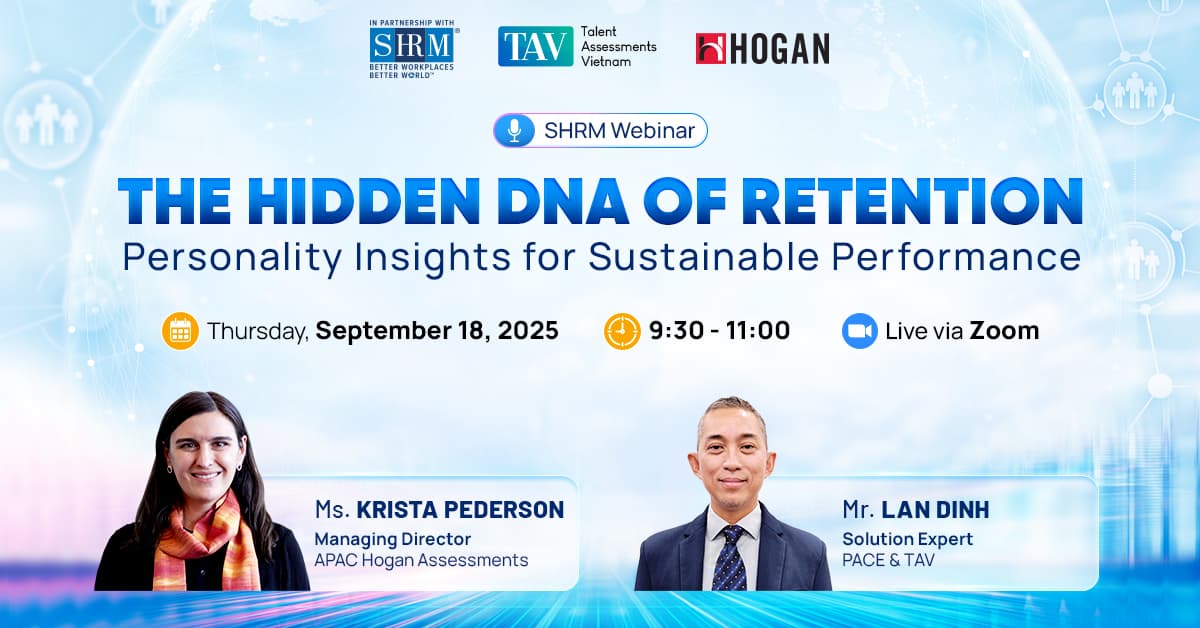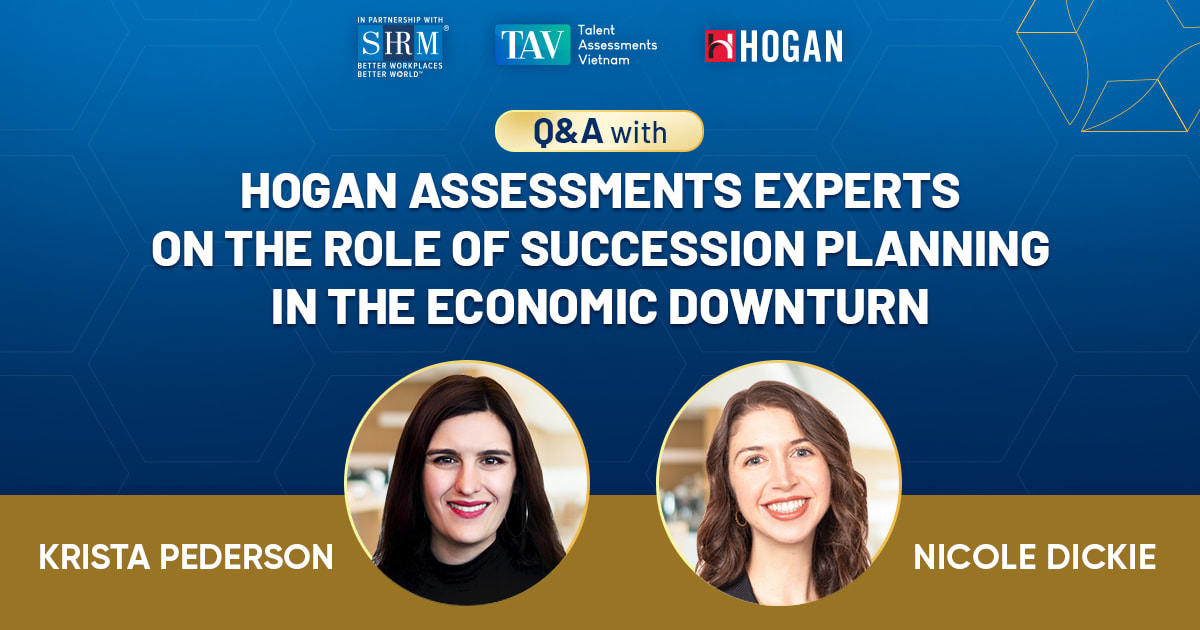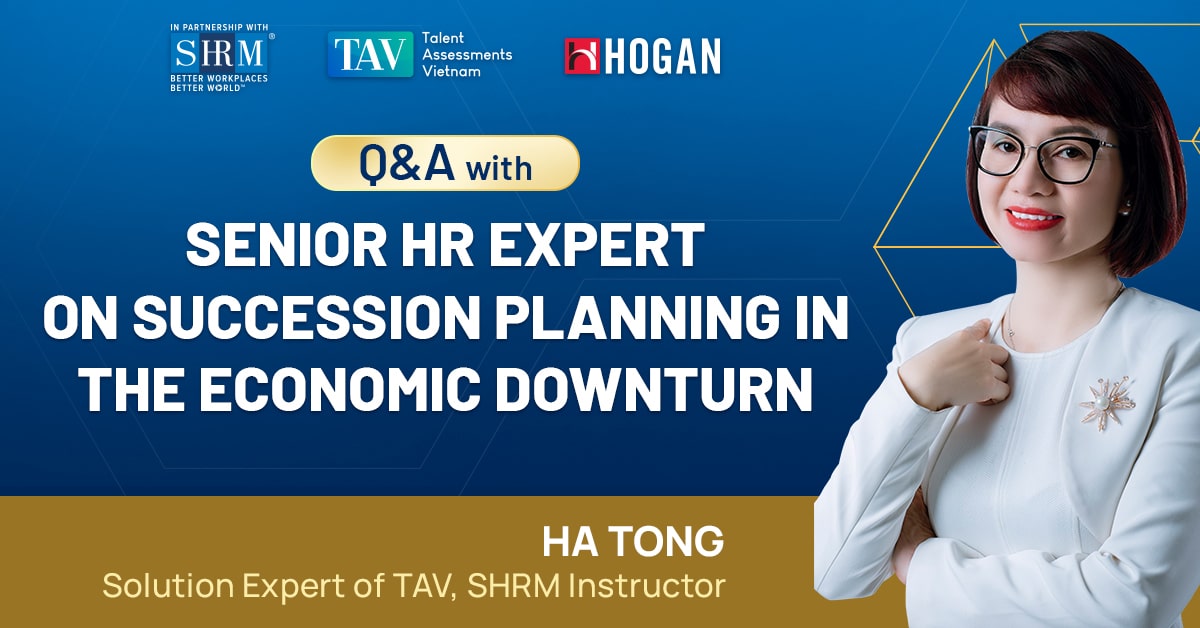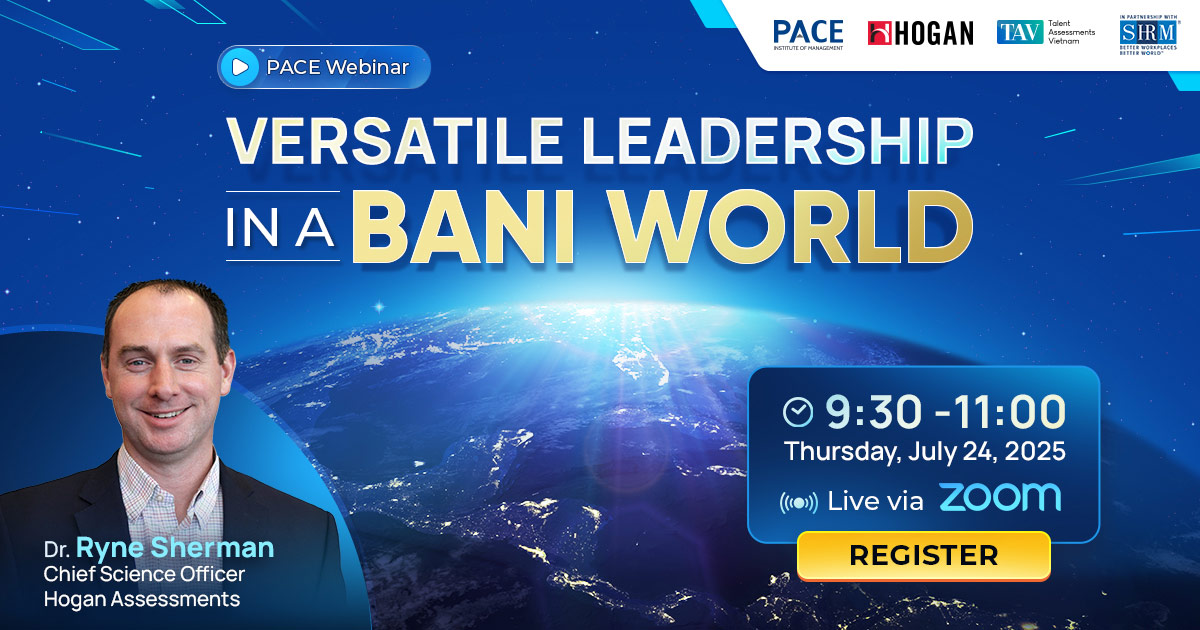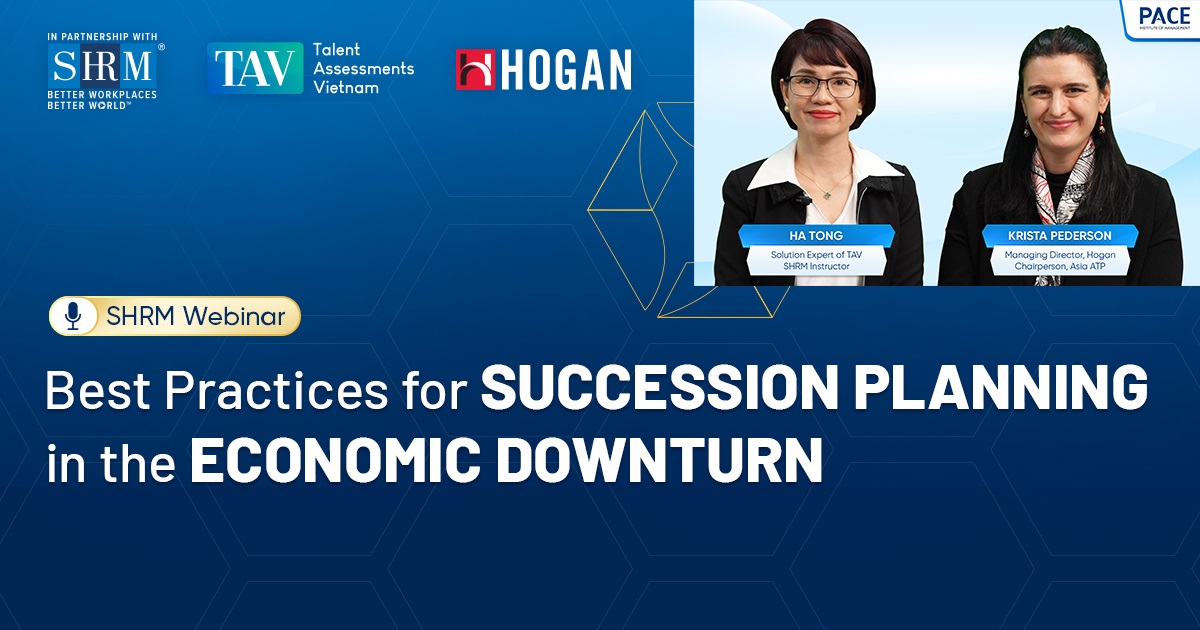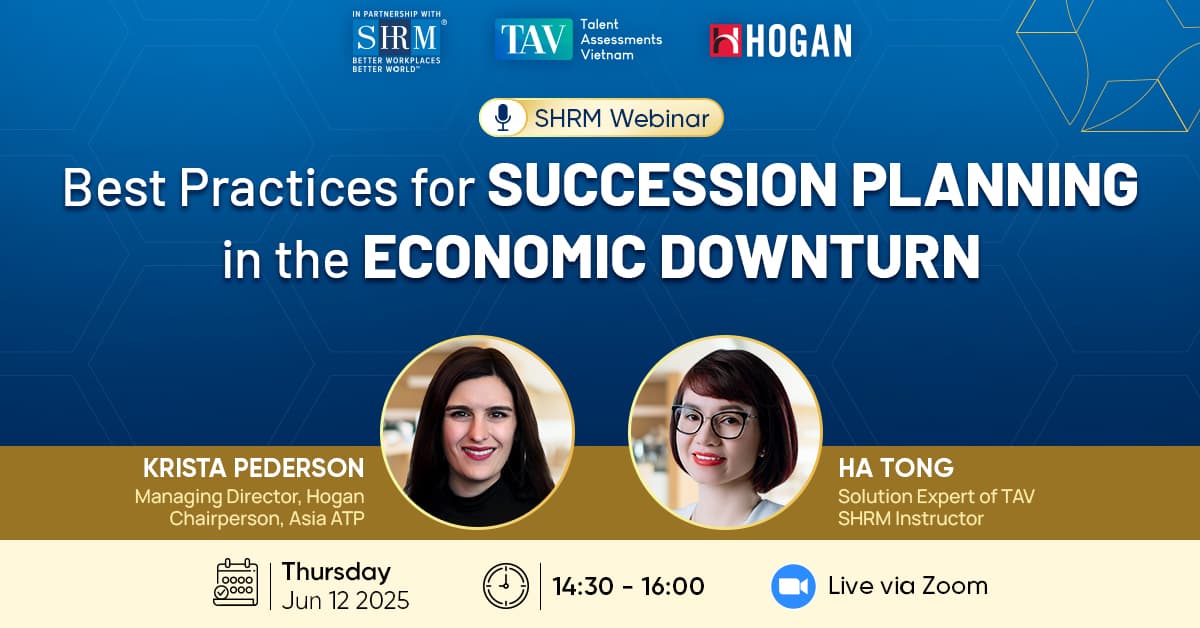REBUILDING SUCCESSION LEADERSHIP IN TIMES OF UNCERTAINTY
On June 12, 2025, the Webinar titled “Best Practices for Succession Planning in the Economic Downturn” was co-organized by Hogan Assessments, the Society for Human Resource Management (SHRM), and Talent Assessments Vietnam (TAV).
The Webinar provided leaders, HR directors, and organizational development professionals with strategic perspectives and practical tools for building effective succession plans in a BANI world (Brittle, Anxious, Nonlinear, Incomprehensible – a framework that describes today’s highly uncertain and complex environment). With insights shared by two experienced speakers from both international and local contexts, the program delivered in-depth knowledge, real-world lessons, and actionable recommendations for Vietnamese businesses.
Why has succession planning become a survival strategy in the BANI world?
In a world where economic uncertainty is constant, the labor market is being reshaped, and AI is transforming every working model, the question is no longer “Do we need succession planning?” but “Are we fast enough to build it before it’s too late?”
Ms. Ha Tong - Solution Expert of Talent Assessments Vietnam opened her talk with a series of practical questions: Has your company established a succession plan? Are you tracking its implementation effectively? What percentage of internal appointments align with the plan?
Quick polling results during the webinar revealed a common reality: most companies have a succession plan, but lack oversight, clear metrics, and proactive strategies. This becomes especially concerning in light of the World Economic Forum’s 2025 report, which projects that within the next five years:
- 23% of current jobs will be fundamentally transformed.
- 81 million jobs will disappear, while only 69 million new ones will be created.
- 44% of core worker skills will no longer be relevant.
This change is not only global but also highly relevant to Vietnam, a country currently in its “demographic golden age” but expected to enter an aging population phase by 2035. This means the window of opportunity for building a strong leadership pipeline is closing and without immediate investment, the future of many organizations is at risk.

Ms. Ha Tong shared insightful remarks during her session
Succession planning is no longer merely about preparing a replacement. It is a strategic tool to ensure leadership continuity, enhance organizational agility, and proactively navigate talent disruptions. Ms. Ha Tong shared a 7-step model for succession planning and a “maturity curve” framework that helps organizations assess their current stage in the succession journey.
At the same time, to help organizations systematically assess their succession pipeline, Ms. Nhị Hà also introduced the Nine-box Model a simple yet highly visual tool used to evaluate employees based on their potential and performance.
The vertical axis represents development potential, while the horizontal axis indicates job performance. By combining these two dimensions, each employee falls into one of nine categories, enabling organizations to:
- Identify "Superstars" – ideal successors for future leadership roles.
- Recognize "Emerging Stars" or "Key Players" – high-potential individuals who need timely development to be ready for succession.
- Reassess "Inconsistent Players" or "Talent Risks" – those who may require intervention, reassignment, or replacement.
Ms. Ha Tong emphasized: “Having ability alone does not guarantee a place in the succession plan. What matters is knowing where each person stands, so we can develop them the right way at the right time.”
Applying this model not only gives managers a comprehensive view of their current talent pool, but also provides a clear data-driven foundation for building a succession strategy rooted in reality rather than intuition.
In parallel, she emphasized the role of AI in HR management. More than just a tool, AI is becoming a core organizational capability. The current trend is shifting from “applying AI” to “adapting and integrating AI” into operations such as policy advising, competency assessments, and even personalized development suggestions. Any organization that has not yet embraced this shift risks falling behind.
Choosing future leaders - Decisions can’t be based on gut feeling
Following Ms. Ha Tong’s session, Ms. Krista Pederson - Managing Director, Hogan Chairperson - Asia Association of Test Publishers Steering Board offered a global perspective grounded in behavioral and personality science. She began with a painful truth: in many organizations, especially in Asia, succession decisions are often influenced by subjectivity, tenure, or internal misalignment.
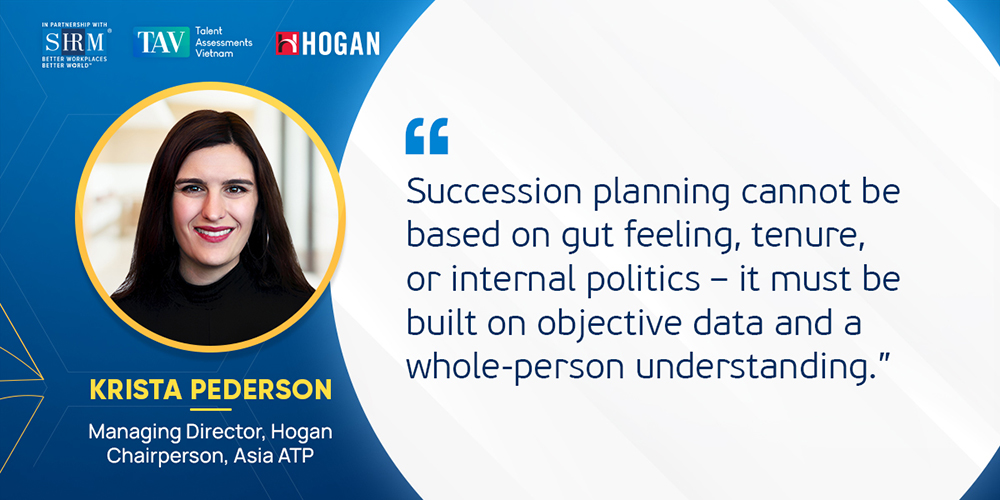
Ms. Krista Pederson proposed several objective solutions for developing a succession plan.
Why is this? According to Implicit Leader Theory, people tend to choose successors who resemble themselves. As a result, companies often “replicate” similar leadership profiles sometimes in terms of gender, background, or personality. In some organizations, being male becomes an unspoken requirement for leadership roles, which ultimately suppresses true potential.
Hogan’s proposed solution is to use personality assessments objective tools that are unbiased by gender, age, or ethnicity. With this approach, candidates are evaluated based on behavioral capabilities, performance potential, and intrinsic motivation - not appearances or connections.
However, succession is not simply about selecting high performers to become leaders. One key point emphasized by Ms. Patterson is that not everyone is suited to be a leaderand that’s okay. Companies should design two parallel development paths:
- One for high-potential leadership talent, who are capable of becoming effective leaders those who will lead their organizations to achieve high performance
- One for subject-matter experts, who are highly skilled, valuable professionals that do not wish to lead others.
Focusing only on “high potential leaders” may cause subject-matter experts to feel overlooked, leading to a loss of quiet but critical talent. That’s why many top organizations are now implementing a dual-track development system to encourage and retain both groups.
Leadership development also cannot follow a one-size-fits-all approach. Ms. Krista advocates for individualized development each successor needs to:
- Understand their strengths and areas for growth.
- Recognize their “dark side” behaviors-traits that may become harmful when overused (e.g., passion turning into impulsiveness, control turning into micromanagement).
- Receive support in developing adaptability, self-awareness, and contextual leadership agility.
Hogan uses a three-dimensional model to evaluate leadership: Bright side (everyday strengths and weaknesses), Dark side (overused strengths that derail careers), Inside (personal goals, interests, and drivers).
Ms. Krista concluded with a powerful reminder “A single negative behavior can break trust but it takes ten positive behaviors to rebuild it.” Therefore, succession planning must not overlook the “dark side” of leadership. It's not just about strengthening talents it’s also about helping future leaders avoid preventable mistakes before they happen.
Finally, she recommended applying the Kaizen philosophy – continuous improvement. Succession planning should not be treated as a one-off project but rather as a living strategy, continually reviewed, measured, and refined based on feedback and actual impact. Investing in internal successors is not only more cost-effective, but also significantly increases success rates compared to hiring external leaders (according to Harvard Business Review).
Conclusion
Succession planning is not just a management tool it is a long-term commitment to the sustainable development of the organization. It demands a deep understanding of people, the use of objective data, individualized development, and a mindset of continuous effort.
In an era where change is constant, organizations that cultivate a strong, flexible succession pipeline today are the ones that will secure their future tomorrow.
